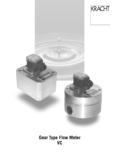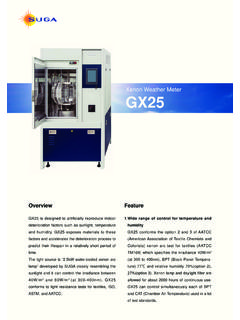Transcription of BUILD A 2 METER YAGI AND 6 METER - Website of …
1 BUILD A 2 METER yagi AND 6 METER yagi ANTENNA USING THE VELOCITY FACTOR OF COAX TO DECREASE SIZE OF ANTENNA. Reduce the size of your antennas by using these simple and effective ideas! An article and project by Steve, K4 MMG based on ideas by John, N0 KHQ Dialup users Please allow time for pictures to load! 2 and 6 METER Coax Antennas After reading John s (N0 KHQ) article and his description for constructing a reduced size Moxon antenna using coax, I decided to expand on his concept but in a yagi configuration. My purpose was to ultimately end up with antennas that I could just use for monitoring to catch band openings etc., and be smaller. Additionally I would not have to use up my limited supply of aluminum tubing. Each antenna that I will describe uses John s formula for calculating the coax lengths ( 984 x .66/your frequency/4= of the driven element), but I did not leave the 20% longer sections as I was not going to use insulators.
2 All coax ends are shorted together. (See picture below) Both antennas have 3-4db of forward gain, good side rejection and the F/B is reasonable. I do not have any test equipment for lab type of measurements, but what I have just noted are the results of on the air tests, and some during band openings. 2 ELEMENT SIX METER ANTENNA The 6 METER antenna has two elements and is housed in inch pvc tubing, using T connectors to form the yagi configuration, and another T is located mid-way between the two elements for support. End caps are used to enclose the pvc ends. The coax feed is inserted into the DE T via a drilled hole on the T s under From The Document LibraryFrom The Document Libraryside. I used clear silicone to seal the hole. Using a MFJ 259, I followed the guidelines as John has described them in his article and cut both the DE, and the REF coax to length for At the DE remove the shield inch at the feed points, attach your coax to these two center conductors independent from each other.
3 (See drawing below), I found that when the DE was installed in the pvc tubing the center frequency shifted down slightly, almost 50 kHz. I used RG58/U coax for my elements. To readjust this, I cut off approx 1/16 inch off each end piece of both the DE and REF. I used RG8X for the feed line. The band width for this antenna is about for a swr of < The final dimensions for the 6 METER antenna are as follows. The spacing between the DE and the REF is inches. The total coax length for the DE is 56 inches. The length for REF is 59 inches. (See pictures below) I painted the pvc pipe with a combination of Wal-Mart cheap flat black and walnut to allow it to blend in with the trees. I stuffed some rubber padding into the pvc tubing to hold the coax elements tight against the pvc walls. 2 METER THREE ELEMENT yagi (Prototype) The 2 METER antenna in picture above is a three element yagi and again it uses John s formula for calculating the length for the DE and REF The 1st DIR length was calculated by reducing the dimensional length of the DE by 3%.
4 Remove the shield from the DE about inch, attach your coax to these two center conductors independent of each other. I used RG58/U for the elements, RG8X for the feed line. The boom for this antenna is inch pvc tubing, and the elements are wooden dowels used to support and hold the coax in place. Since I will install these elements in pvc tubing later, I just used tape to hold the elements in place. The band width is 144-148 for a swr < Spacing for the elements is as follows: From The Document LibraryFrom The Document LibraryREF to DE inches DE to DIR inches The REF length is inches DE is inches DIR inches. A picture of the coax configeration is shown below: Seal up all ends of the coax, and where the DE is fed, all with silicone, if you do not plan to enclose it in This antenna has been used in both a vertical and horizontal configuration with the same performance results. You can make a two element version if you want, a little less gain but very portable and light weight.
5 An explanation of the abbreviations DE= driven element (dipole) REF= reflector DIR= director More thoughts by Steve After building these antennas I believe they both could be built using a good swr METER in lieu of the MFJ259. It may take a little longer, but it is possible. If you use only an swr METER , just use the formula, 234/your frequency x .66 = of dipole. This means however you will have to make the complete dipole for testing. The reason I say this is because you will probably be using a signal source that is around a watt or more to get the swr METER to indicate. In this instance unless the antenna under test is away from the signal source RF fields are likely to cause false readings. This is the advantage of using the MFJ 259. The performance parameters noted in the description for both these antennas was referenced to each From The Document LibraryFrom The Document Libraryantennas DE alone, and then the other elements were added for the final performance measurements.
6 As with any homemade antenna the information that I have provided is what I found out to be the case. If you BUILD one of these you most probably will end up with something slightly different for the coax element lengths. Construction of this type will provide you with a lightweight, smaller, portable and operational antenna that you can truly enjoy because you built it yourself! Fabrication does not require any special tools or equipment. 73 and enjoy, Email Steve for questions at the address below: Please note that this is a spam fighting email address. You can't click on it! Just copy it down on paper and go from there! marfa at ktc dot com Photos by K4 MMG Editors note: Well Guys and Gals, there you have it thanks to Steve, K4 MMG. JUST GOES TO SHOW YOU THAT A BIT OF TIME, DETERMINATION AND A "CAN DO" ATTITUDE ALONG WITH A BIT OF BRAIN STORMING AND A LITTLE MONEY, YOU CAN HAVE FUN EXPERIMENTING WITH ANTENNAS! Based on comparing the sizes of "normal" antennas using the standard formulas for a half wave dipole versus using the velocity factor ideas by John, The end result is antenna about 40 percent smaller!
7 Now who is going to submit plans, diagrams, pics, etc for the following antennas using these ideas? What about it Steve or John or QRZ? 160 METER Inverted Vee 80/75 Inverted Vee 40 METER Inverted Vee 2 Element 40 METER Beam Dipoles and on and on ETC,ETC Contact this webmaster via n4ujw at when you have them ready to share with others on this site! N4 UJW From The Document LibraryFrom The Document Library
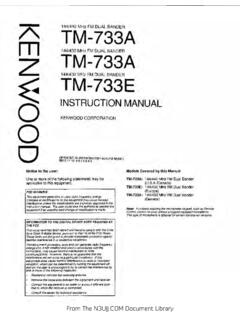
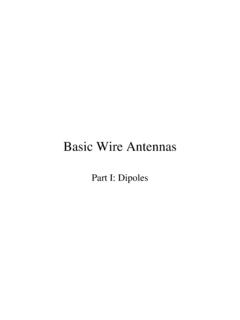


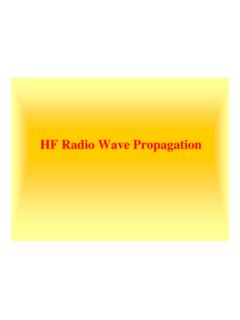

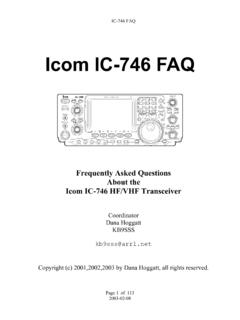
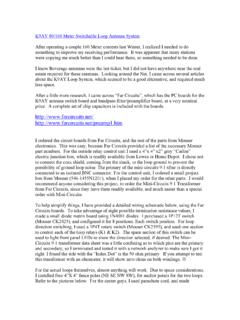
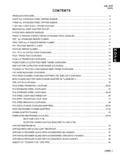
![Ultrameter Operation Manual Model 4P - [Official] …](/cache/preview/5/6/3/b/4/c/a/c/thumb-563b4cac4eb8bcdcacf744e42dc2ead6.jpg)



